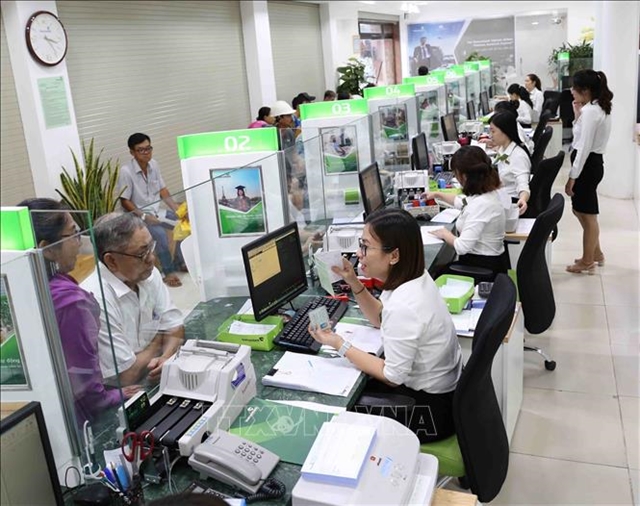 Economy
Economy

Prime Minister has approved the national financial inclusion strategy until 2025 with a vision to 2030, targeting at least 80 per cent of adults in the country to have bank accounts.

|
| At least 50 per cent of communes nationwide will have offices to provide financial services by the end of 2025. VNA/VNS Photo |
HÀ NỘI - Prime Minister Nguyễn Xuân Phúc has approved a national financial inclusion strategy until 2025 with a vision to 2030, targeting at least 80 per cent of adults in the country to have bank accounts by 2025.
The strategy is aimed to ensure individuals and enterprises, particularly low-income and vulnerable people, medium-, small- and micro-sized enterprises, to have access to basic financial products and services, such as payment, money transfer, saving, credit and insurance, in a convenient way and at affordable prices.
Accordingly, the strategy targeted that by the end of 2025, at least 50 per cent of communes nationwide have offices to provide financial services and at least 25-30 per cent of adults have saving accounts at credit institutions.
The number of non-cash transactions is also expected to increase by 20-25 per cent annually and insurance premium income to reach around 3.5 per cent of GDP by 2025.
At least 250,000 small- and medium-sized enterprises can have access to bank loans and the ratio of outstanding loans for the agricultural sector to the country’s total outstanding loans will be 25 per cent by 2025.
To achieve the targets, the strategy provides a number of solutions, including streamlining the legal framework to ease the implementation of financial inclusion; diversifying financial services providers and supporting channels to ensure greater coverage of financial services and products; upgrading financial infrastructures and reducing transaction fees.
According to Deputy Governor of the State Bank of Việt Nam (SBV) Nguyễn Kim Anh, Việt Nam is in urgent need for the national financial inclusion strategy, which is in line with the country’s socio-economic development strategy.
Financial inclusion has become a global issue, and is considered the key to address poverty reduction and social inequality, Anh noted.
According to the SBV, though Việt Nam’s financial and banking system has made huge progress in recent years, the country has seen a low financial inclusion rate with about half of the population not having a bank account. In far-flung and difficult-to-reach areas, where banks have difficulties in opening transaction offices, many people even have no idea about financial services.
To address the problems, adjustments to policies and legal framework are required to make it easier for people and businesses to access official basic financial services.
According to the SBV, international experience showed that countries with a national strategy are likely to achieve goals on financial inclusion. About 35 countries worldwide have announced their national financial inclusion strategies and some 25 others are developing their own ones.
Financial experts also stressed that a successful implementation of the national financial inclusion strategy will require an effective coordination between the Government and private sectors, as seen from the experience of regional countries like Indonesia, the Philippines and Malaysia. VNS




